The blunderbuss was never used in large numbers, probably due to the way war was waged in the eighteenth and nineteenth century. Such a small compact weapon had no real place on the battlefields of Europe. Where the blunderbuss excelled was in the line of personal security.
What is a blunderbuss?
However, the battlefield of Europe had little in common with the tactics of a boarding party on the high seas. The blunderbuss was more like a hand held cannon than a rifle. The name blunderbuss is probably derived from the German donnerbusche which means thunder gun.
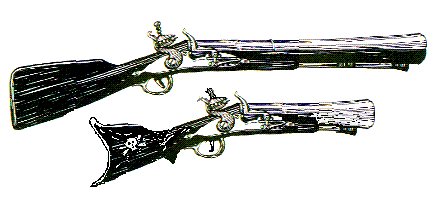
The word “blunderbuss” actually has origin in Dutch: "donderbus" which translates to "thunder gun". This was due to the loud noise that would be generated when firing this particular firearm, which made it sound much like thunder – hence its nickname "thundergun" or "thunder pipe".
When was the blunderbuss invented?
The exact date of the invention of the blunderbuss is not entirely clear, as the origins of the weapon are somewhat obscure [1]. However, it is generally believed to have been first produced in Europe, most likely in Spain or the Netherlands, sometime in the early to mid-17th century.
The blunderbuss was an important development in the history of firearms, as it was one of the first guns designed specifically for close-range combat. Its wide, flared muzzle made it easier to load and fire than earlier firearms, and its short length made it more maneuverable in tight spaces, such as on ships or in buildings.
Blunderbuss size
It ranged in size from 14 to about 30 inches Some blunderbuss' were actually large bore pistols but most had at least a small shoulder stock. (Muskets of the time tended to be much longer, ranging around 60 inches long.) They were in use as a weapon as early as 1530 until at least 1840 when the Royal Mail coach service received an order for several flintlock blunderbusses. The blunderbuss was a large caliber weapon with a bore around 1 1/2 to 2 inches. It fired several small pellets, as with today's shot guns.
Many blunderbusses had short stocks and were not designed to be fired from the shoulder like a musket. The purpose of the stock was to allow the weapon to braced against the hip or squeezed between the forearm and side of the body in order to help steady the enormous kick of the gun. The weapon usually had no sights so it would have been little use to even attempt to shoulder fire the gun. Some of the longer models could have been fired from the shoulder but due to the recoil, and short range it would have probably been wiser to brace the gun in some other manner.
Blunderbuss range
At close range the weapon would have been quite deadly. The spread from the gun could quite easily be as much as a few feet about ten to twenty feet from the muzzle, perhaps as much as six to ten feet at a range of thirty or forty feet. However, the gun would have done little good at a distance much more than this.
But one must also realize that on a sloop or Man o War of the time this would have been more than an adequate range. The main down fall of the blunderbuss would have been it one shot capability and the fact that most men would need both hands in order to fire it. This means that after the first shot the weapon would be no more than a club, and a lousy club at that. It would have been quite difficult to wield a cutlass in the right hand while hold a blunderbuss in the left.
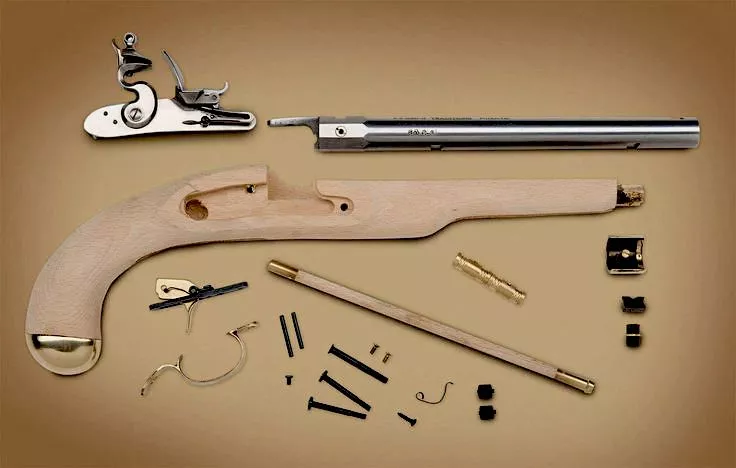
Some blunderbuss were fitted with a folding bayonet which ran along the top of the barrel, however this too was really ineffective. The blunderbuss short length was a major deficit when it came to using the weapon with a bayonet. Bayonets were attached to weapons in order for the rifle to be used as a pike. Rifles at best were a poor substitute for the pike, and attempting to use a blunderbuss as a pike was suicide.
Where the blunderbuss excelled was in its ability to repel boarders and the sheer psychological effect of its mighty roar, and tit ability to scatter shot all over the deck. There is no record of any pirate captain that favored the use of a blunderbuss but I'm sure that any captain who worried of mutiny, would have enjoyed the security offered by the blunderbuss in the closed quarters of his cabin. Furthermore I'm sure any man who was going to lead a boarding party would have preferred the mighty blast from a blunderbuss into his enemy before having to resort to his cutlass.
How long did it take to reload a blunderbuss?
Loading and firing the Blunderbuss was not as fast or easy as shooting a modern firearm [2]. It took a long time to reload, with experts estimating anywhere from two minutes to five minutes, depending on experience.
This process was quite laborious and painstakingly slow as gunpowder had to be hand loaded into the muzzle, followed by wadding, then the shot itself. The variety of ammunition typically used also affected loading times – smaller buckshot was generally easier and faster to load than larger rounds fired from cannons or mortars.
Overall, it took considerable effort and practice before reloads could be completed fast enough for users to maintain a steady rate of fire with their Blunderbusses without needing extended pauses between shots in order for them time-consuming reloads; experienced musketeers were said capable of taking as little as 30 seconds between shots after significant amounts training!
Examples of Blunberbuss, Boat Gun and Musketoon
The first three images are examples of a Blunderbuss, a Musketoon, and a Boat Gun. Note the similarities as well as the difference. The blunderbuss in this example has a barrel with a diameter of 1.5 inches, the Musketoon has 1 inch barrel and the boat gun has a diameter of 1.25 inches. While the barrel of the Musketoon appears to flare, it really is just shapped like a cannon. The pintle mount of the boat gun give the weapon added stability during firing as the recoil of the weapon is absorbed by the ship. The boat gun in effect is a small swivel gun.
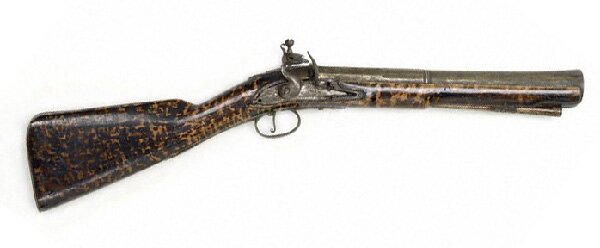
Blunderbuss, 1710
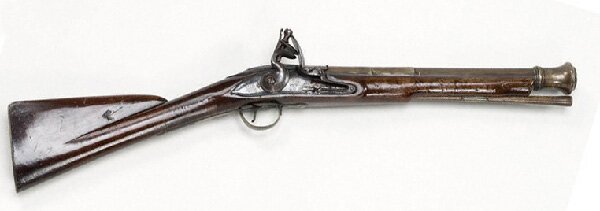
Musketoon, 1757
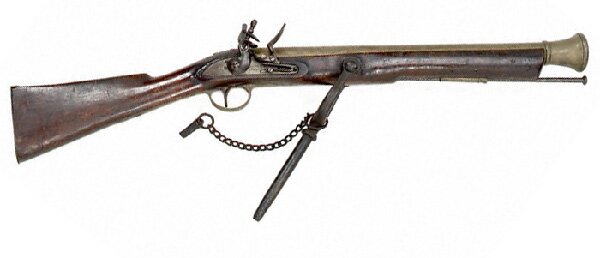
Boat Gun 1700s era
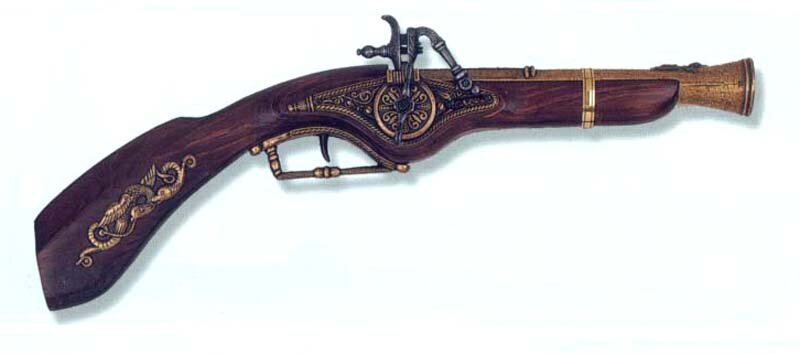
17th Century Wheellock Blunderbuss
- "The Springfield 1903 Rifles: The illustrated, documented story of the design, development, and production of all the models, appendages, and accessories" by William S. Brophy, Stackpole Books, 1985 (ISBN: 9780811708722)
- "The Dutch Republic in the Seventeenth Century: The Golden Age" by Maarten Prak, Diane Webb, Cambridge University Press, 2005 (ISBN: 9780521843522)

The only author and editor of all pages on the site. Most of what I write about is based on years of book reading on the topic. My first web page was published back in 1994.